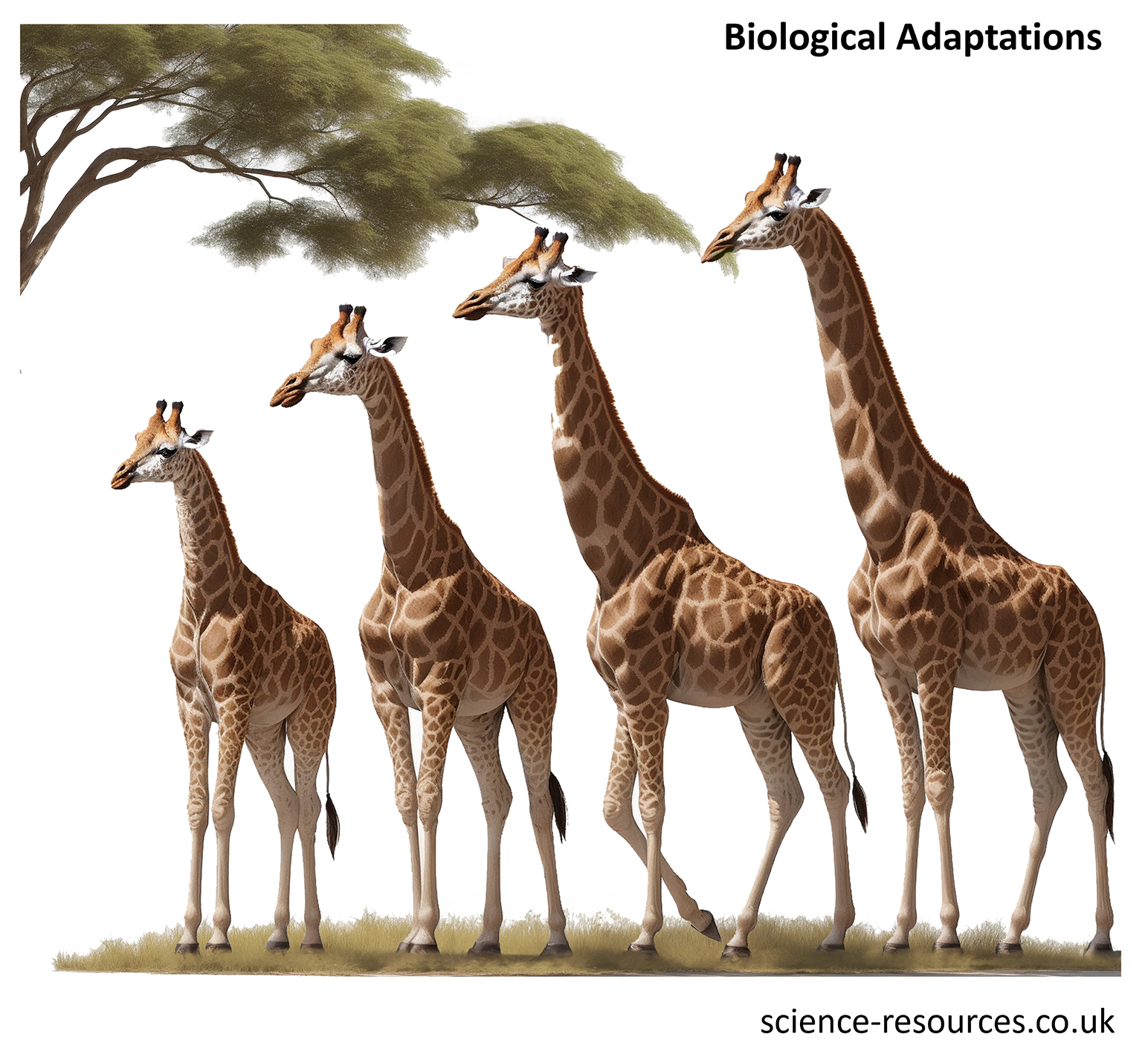Evolution and natural selection
Adaptations of animals The long neck of the Giraffe is an example of biological adaptation, since it helps the Giraffe reach leaves, but also serves as a deterrent to predators. Evolution
Organisms have features that help them survive. These can be related to their physical appearance - these are structural adaptations - or they can be behavioural adaptations, which affect how the organisms act.
Adaptations can also be physiological. This means they involve the functions of the body. An example of this kind of adaptation is making poison.
Variation means that some organisms of the same species have small differences. These tiny differences might give some organisms slightly better features and so make it more likely that they survive and have offspring which have these same adaptations. Over time, this process can give rise to new species of organisms - we call this evolution.
Charles Darwin’s theory of evolution suggests that all living things on Earth have come from common ancestors that lived billions of years ago.
Over a vast period of time, evolution has made life more diverse. The theory of evolution helps us understand how living things have changed and adapted to their surroundings over time. These changes have caused some new species to appear and some old species to die out (become extinct).
Natural selection The evolution of a species happens when the characteristics and traits of individuals within the species change gradually over time. These changes can make the species very different from how it was before. Sometimes, the changes are so big that the species becomes a new, separate species. This new species cannot mate with the old species. Evidence of evolution
The process of evolution by natural selection, which scientist Charles Darwin suggested, tells us how living things change over time.
This process says that there are differences among the same kind of living things. Those that fit their environment better have a higher chance of living and having babies. So, they can give their genes to the next generation.
But, those that do not fit their environment well are more likely to die or not have babies. This means that their genes will disappear from the gene pool.
This process makes the fittest survive, as those living things with good traits are more likely to give their genes to the next generation.
For example, among a group of mice, the mice that are good at finding food and hiding from predators are more likely to live and have babies. But the mice that are bad at doing so may not live long enough to give their genes.
Charles Darwin’s theory of evolution by natural selection is supported by evidence from fossil records. They reveal how organisms have changed over long periods of time.
By examining the fossils, scientists can observe how different species have evolved and adapted to their environments. This supports the idea that natural selection is a factor in creating the diversity of life on Earth.
Summary: